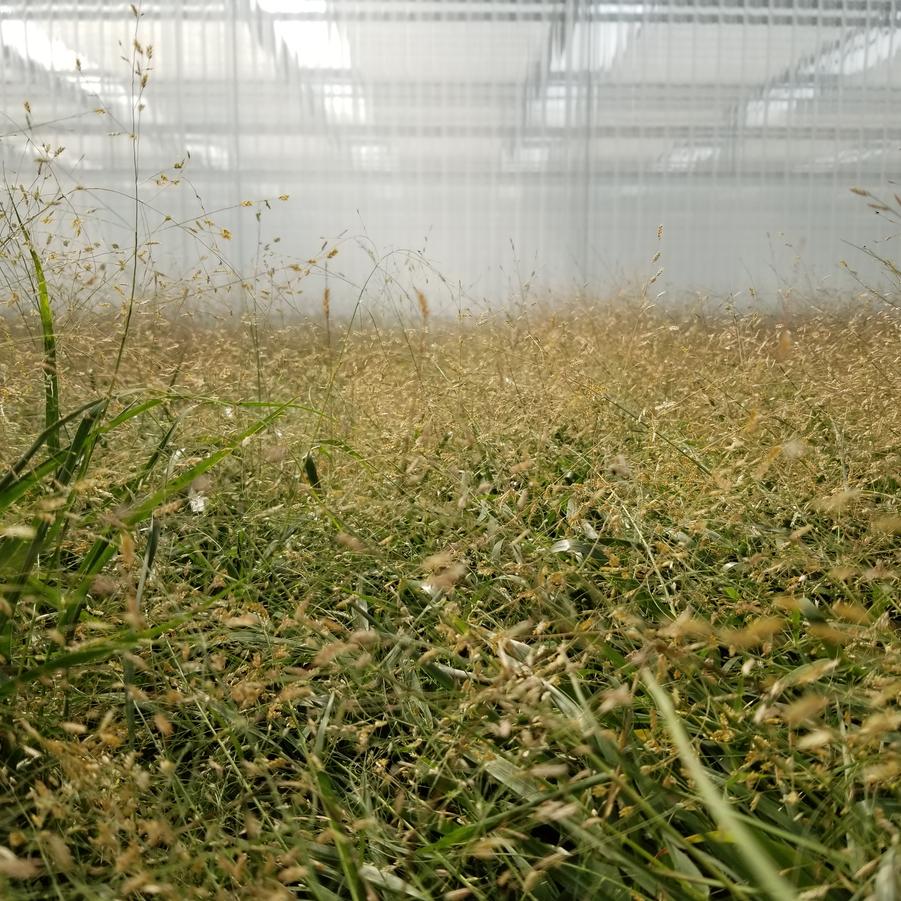





Plant Calculator
Enter the approximate length and width of the area you will be planting and click 'Calculate' to determine how many Eragrostis spectabilis you will need.
Correct and successful spacing is complex and depends on project conditions. We encourage you to call us at 877-ECO-PLUG for project specific recommendations and further assistance.
Eragrostis spectabilis
purple lovegrass
- Category: Grass
- Hardiness Zone: 4-11
- Height: 18-24 Inches
- Spread: 2-3 Feet
- Spacing: 12 Inches
- Bloom Color: Violet
Fluffy clouds of bronze-red inflorescences are soft and subtle in the sunlight. Light green foliage in summer turning to a bronzy-red in fall. Irresistible texture plant for the late summer garden.
Click here to download technical information for growers:
Exposure
| • | Full Sun |
Wetland Indicator Status
| • | Obligate Upland (UPL) |
For Animals
| • | Deer Resistant |
Propagation Type
| • | Open pollinated |
Grass Type
| • | Warm Season |
Additional Information about Eragrostis spectabilis
Eragrostis spectabilis earns its specific epithet through its spectacular and irresistible texture late in the summer. Fluffy clouds of bronze-red inflorescences are soft and subtle in the sunlight, preceded by loose light green foliage in the summer turning golden wheat in the cooler temperatures of fall. A beautiful warm-season bunch grass, it spreads slowly by seed and rhizome. At its height, it grows 2’ tall and spreads to 2’ feet, creating a uniform and roughly textured patch when used in the garden or in containers.
Purple lovegrass thrives in infertile, sandy and poor soils in full sun and is drought tolerant. It is found through most of the United States from Maine to Florida and west all the way to Arizona and North Dakota. Plants are indigenous to sandy and rocky sites such as abandoned fields, roadside and railroad right-of-ways, dry prairies, and upland savannas.
We commonly notice this plant late summer as you speed down the road and note wispy red clouds happening in small drifts along the roadside—now imagine this plant in mass, as an understory to striking punctuation marks to taller forbes with lankier stems. The foliage is a host plant to Lepidoptera larvae and the seedheads are attractive to birds. We note, however, that Eragrostis spectabilis performs poorly in rich soils with poor drainage—the plant begins to rot and never fully settles into the soil. It is best used in a challenging area where drainage is sharper.
Growing & Maintenance Tips for Eragrostis spectabilis
Tolerates infertile, sandy, and poor soils in full sun and is drought tolerant. Spreads slowly via rhizomes and seed. Propagate by seed or division of clumps every few years. Cut foliage to the ground in early spring before new growth occurs. Use in perennial borders, mass plantings, as a specimen, or as a groundcover in open woodland areas.
